(Haworthia maculata var. livida (Bayer) Bayer, comb.nov. H. pubescens var. livida Bayer in Haworthia Revisited, p.134, 1999, Umdaus) Type: Cape-3319 (Worcester): S Lemoenpoort (-CD), Bayer 1128 (NBG, Holo.).
I described Haworthia pubescens var. livida in Haworthia Revisited (Umdaus, 1999), in the full knowledge that it was in a twilight zone of inadequate information. It is a good example of how Latin names give plants a false reality. The system forces decision making without any slack being cut for doubt. This is thus a good opportunity to demonstrate what inexperience and ignorance add to the process of classification. In the small area along the Breede River north of the Brandvlei Dam near Worcester, the species H. herbacea, H. maculata and H. pubescens grow in close proximity. H. herbacea is ubiquitous throughout the Worcester/Robertson Karoo, while H. maculata has a curious distribution in that area. It occurs at widely separated localities on the western fringe of H. herbacea and I have wondered about its relationship to that species because of the similar flowers and flowering time. H. pubescens is only known from a small set of low ridges east of the Brandvlei Dam where it grows in close proximity to H. herbacea. It also has similar flowers but it flowers a little later in late spring as opposed to early spring.
When I first discovered plants at Lemoenpoort (Hammansberg) about 20km further south I found very few plants and the only thing I could do with them was regard them as in the same context of the Breede River species and hence their description as a variant of that H. pubescens. H. herbacea is very abundant in this area too but almost exclusively in Bokkeveld Shales and Dwyka Tillite. The doubtful plants at Lemoenpoort occur in Witteberg Sandstones. A population of plants was also known from the top of the Moddergat Mountain (Ouhoekberg) to the west that created some problems for me as it seemed to relate to the absence of H. mirabilis from both the Hammansberg and Ouhoekberg. Not only that but it also looked very similar to H. maculata. H. mirabilis is known at its closest east of these two mountains at several localities along the eastern ridges of the Ouhangsberg and Droogerivierberg mountains that are in turn east of Hammansberg. H. maculata is very abundant along the long ridge of low hills north of the Brandvlei Dam. Very similar plants occur high in the Audensberg peaks north of Worcester and also lower down in the Kanetvlei (Sandhills) area west of Heatlie Peak. These hills are very difficult to explore and I speculate a connection to a population at Buitenstekloof to the east. There is a population here that obfuscates the interpretation of the name H. intermedia VPoelln. I lumped this population under H. mirabilis var. notabilis. I have to rely on memory here because having set flower morphology and flowering time aside (without completely ignoring them), I did not have the methodology in place to record detail. The flower was rather similar to H. herbacea and H. maculata and it also flowered late spring. I was not, and am not, sure that there is not a connection between the Buitenstekloof plants and the Kanetvlei plants.
It is unfortunate that Gerhard Marx has expressed his opinion that I have ignored flowers in my classification of Haworthia. While there is no doubt that this is partially true, there are very good reasons why I did this. The main reason is the historic one. It was understood and accepted that the flowers in the species as they were then recognized, were very similar. Even the subgeneric differences were not seen to be significant. My own early attempts at classification also indicated that the flowers were not going to be of assistance at the level at which differences between populations and species were being recognized. In fact I had observed similarities of the flower in populations that were clearly different taxonomic entities. Conversely I observed big floral differences in populations that I imputed to be the same “species”. Because of the added seasonality of flowers, I thus put them aside to focus on exploration and explanation on the basis of the vegetative structures and geographic distribution. Marx’ observation therefore comes at a time when that work is substantial and flowers can now be used to clarify and verify relationships. My conviction is that those relationships are best understood in relation to distribution and we are only now in a position to assess what value the flowers may add to those interpretations.
This article thus reports on the exploration of the Ouhangsberg, Hammansberg and Moddergat (Ouhoekberg) mountains as well as some work done in the Brandvlei Dam area. Again I put flower and flowering time aside – for the moment. This is in the same way I am inclined to the considered view that geographic information and field observation are the essential ingredients whereby ANY method has to provide explanation that satisfies physical experience. The alternative is that what we see and experience physically and mentally, is just the illusion that metaphysicists ascribe to creation.
Populations recorded
The following populations (see map) were found and observed:-
1. KG669/69 N Brandvlei Dam – set 1
2. MBB164 N Brandvlei Dam – set 1
3. MBB1119 (and 6815) Audensberg – set 2
4. MBB1120 (and 7994) Sandhills, Kanetvlei – set 2
5. MBB1128 (and 7066) W Lemoenpoort (type locality var. livida) – set 3
6. MBB1145 Ouhoekberg, Moddergat – set 5
7. MBB2591 NE Brandvlei Dam – set 1
8. MBB4461 (and 6514) Buitenstekloof – set 6
9. MBB7270 Ouhoekberg W – set 5
10. MBB7266 E Lemoenpoort – set 4
11. MBB7271 Cilmor Winery, Dewetsberg – set 7
12. MBB7526 Die Nekkies W. Brandvlei Dam – set 1
13. MBB7991a Ouhoekberg E – set 5
14. MBB7991b west Ouhoekberg E – set 5
15. MBB7992 Hammansberg midpoint – set 8
16. MBB7993 Hammansberg W – set 8
17. MBB7997 Sandberg H. pubescens, type locality – set 9 are for MBB7997 cf H. pubescens N of point 11
18. MBB7995 and 7996 Brickfield H. herbacea ‘submaculata’ – set 10
19. MBB7984, 7985 and 7988 Droogerivierberg, H. mirabilis – set 11
20. Unknowns – set 12
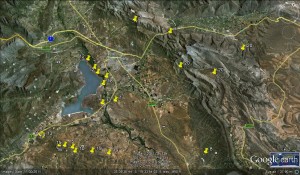
There are 4 records for the Brandvlei Dam but in Update 6, I report on H. maculata from the pump station east of the Resort, very abundant to the eastern point of Die Nekkies. Three of the records are for west of the Resort while I have not confirmed Etwin Aslander’s observation that he had seen it at the extreme western end of Die Nekkies. G.J. Payne in 1970 communicated to me that he had seen a Haworthia south of the Brandvlei Dam above and west of the Brandvlei Hot Spring. I was unable to confirm that in a single brief visit there ca. 1976. I have not been able to relocate plants at Sandhills but have no doubt that it will be found there if more thorough and extensive fieldwork is done there. In fact a very important consideration is that there is still enormous scope for exploration.
On each visit to the Ouhoekberg I have found plants in different local populations and none of the last four records is the same as seen in my first visit. At the original Lemoenpoort I always struggled to find plants at all, and the same applies to the locality to the southeast. At my last visits to these two places there have been many plants but relatively difficult to find.
H. herbacea is abundant in the Hammansberg and Ouhangsberg area as well as east of Cilmore. It has not been observed near the Ouhoekberg. It occurs between Cilmor and Die Nekkies in a larger form that acquired the name H. submaculata V.Poelln.; and I did suspect that there was a continuity with H. maculata that does not now seem to be the case. I exclude H. pubescens from this report. It occurs with H. herbacea east of Cilmor, but it also occurs on the northeastern slope of Dewetsberg north of the H. maculata recorded habitat. There are/were plants of H. mirabilis vegetatively very similar to H. pubescens at the Breede River Bridge southwest of Roberson. Their flowers and flowering times (March) correspond with H. mirabilis in that area. H. pubescens flowers in November (later than H. maculata at Die Nekkies or of H. herbacea – Sept/Oct) and the flower is similar to that of H. herbacea. It seems fairly obvious that H. pubescens fills the gap for H. mirabilis and the flower and flowering time are problematic.
The plants illustrated:
Set 1. Map points 1, 2, 7, 12. Die Nekkies
Figs. 1.1 to 1.5 7526 H. maculata. Die Nekkies.
Figs 1.6 to 1.10, sn* H. maculata, Die Nekkies – East.
A chapter in Update 6 deals with H.maculata – Die Nekkies Biomes, and Haworthia maculata These few images give scant insight into the variability in respect of rosette and leaf form, colour and marking, and proliferation.
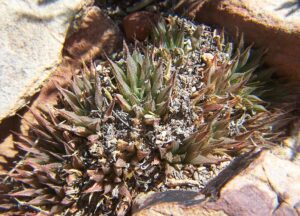
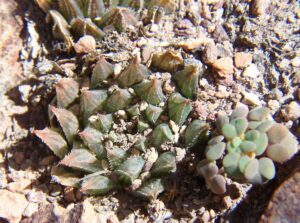
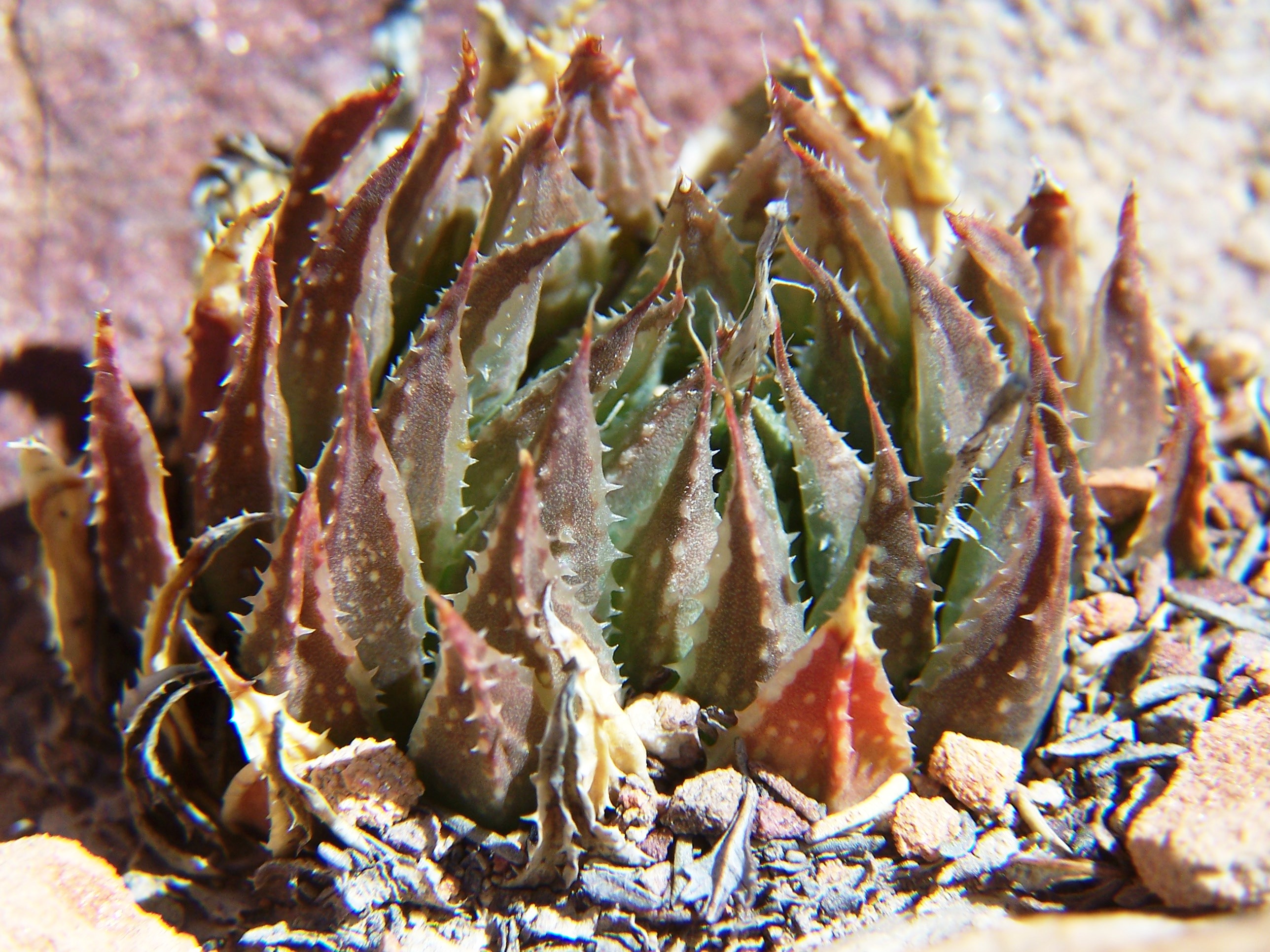

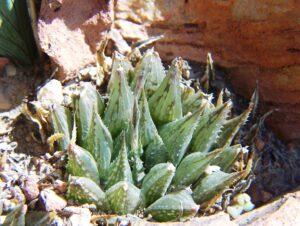
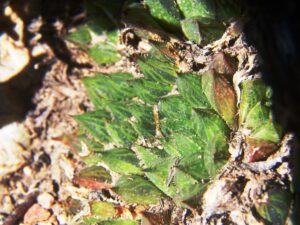
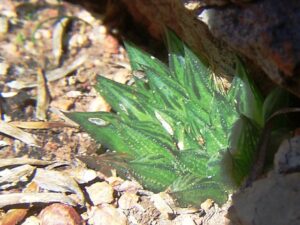
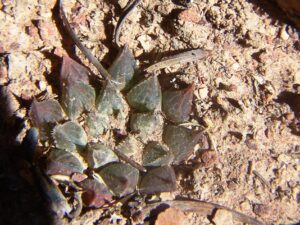
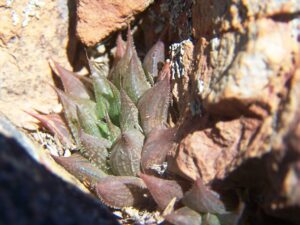
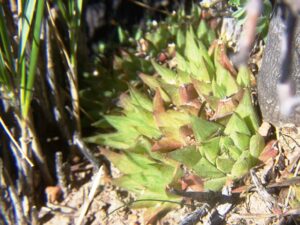
Set 2. Map points 3, 4. Audensberg and Sandhills
Figs. 2.1 to 2.5 MBB6185 H. maculata. Audensberg.
Figs. 2.6 to 2.36 H. maculata, Vreesniet, Kanetvlei.
Unfortunately I found non-digital photography to be costly, cumbersome and unmanageable. So I have no field images for either population on the high Audensberg or at my original Sandhills site. However, I revisited the area and found the plants quite abundant a little further north at Vreesniet that is also Kanetvlei/Sandhills. The plants were almost confined to narrow rock cracks and their presence suggests to me that there is a very probable connection now eastwards to the Unknowns and even further on to the Osplaas H. arachnoidea, Etwin Aslander’s Hex Pass plants, and then still further to the H. marumana ‘dimorpha’ questionable.
Figs. 2.1 to 2.5 MBB6815 H. maculata. Audensberg.
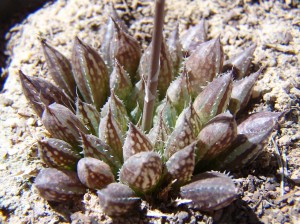
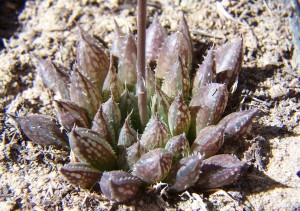
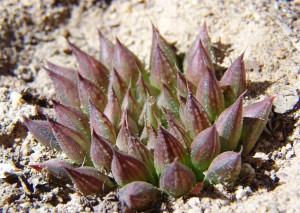
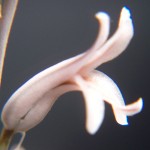
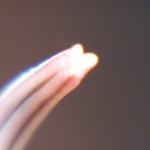
Figs. 2.6 to 2.36 H. maculata, Vreesniet, Kanetvlei.
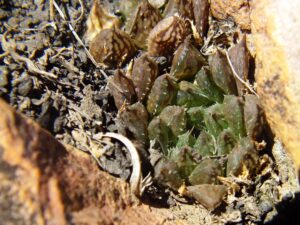
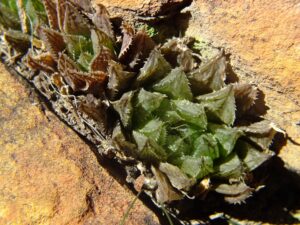

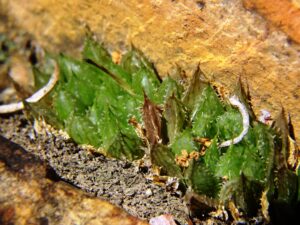

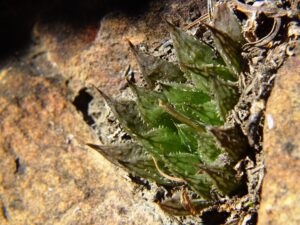
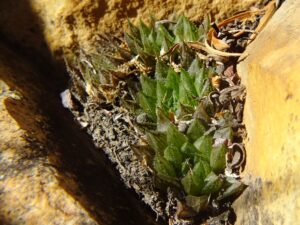
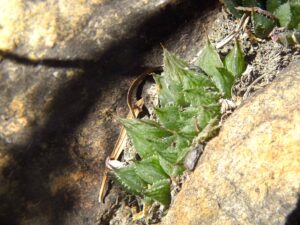

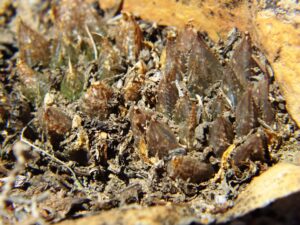
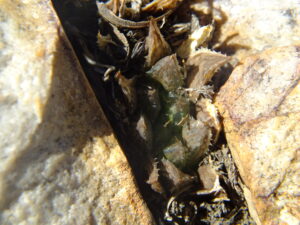
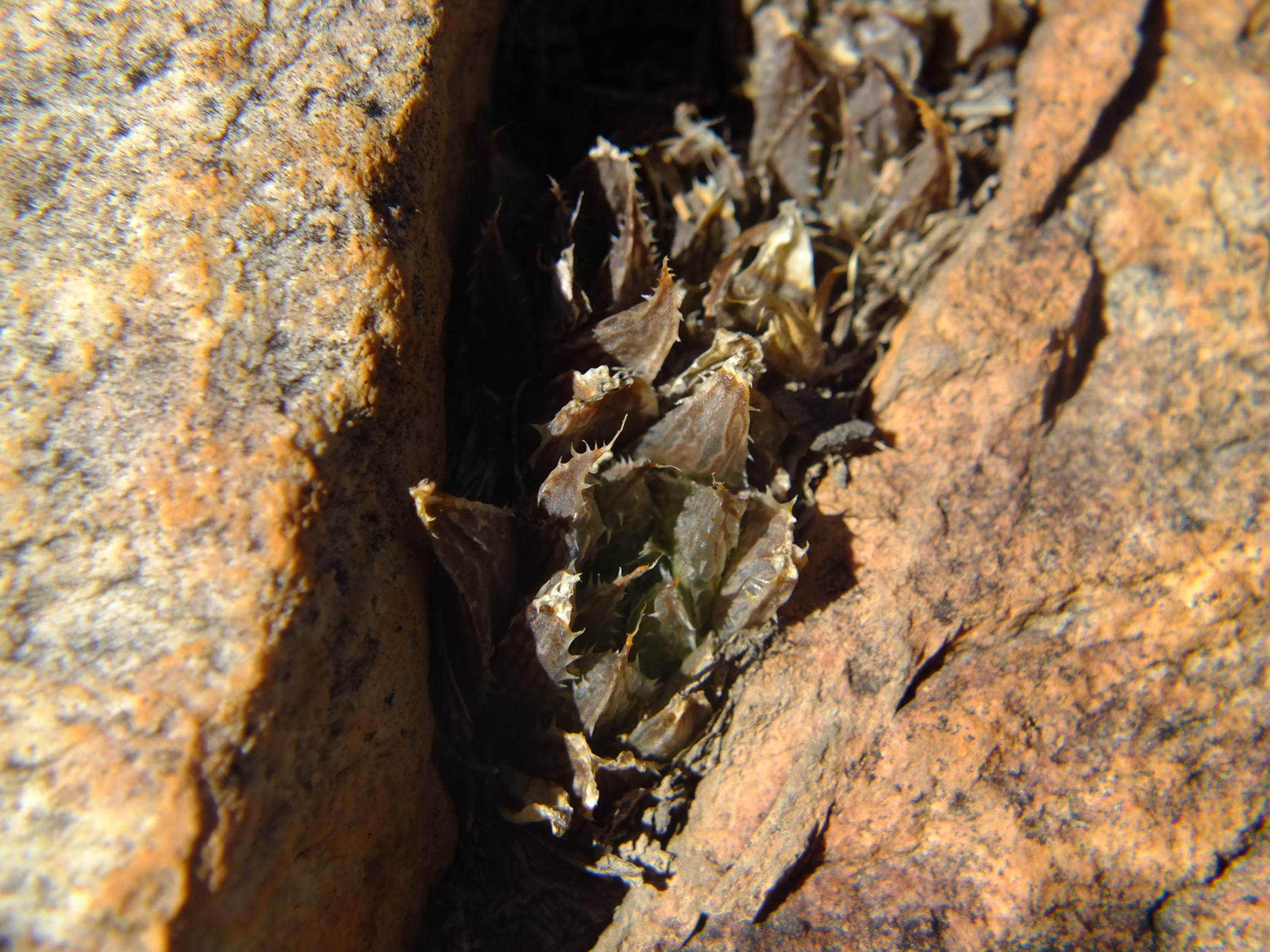
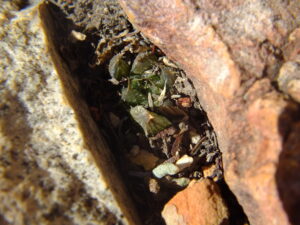
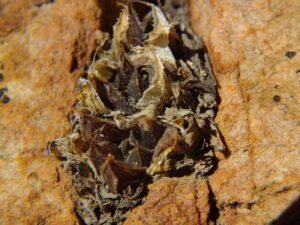
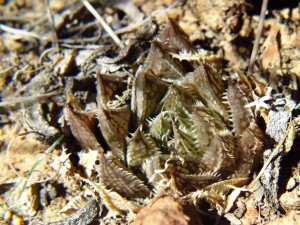
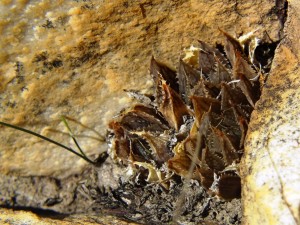

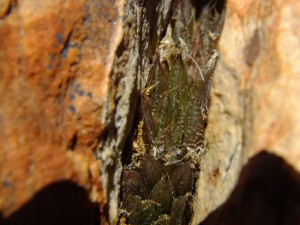
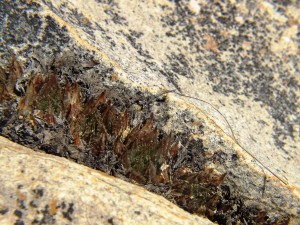
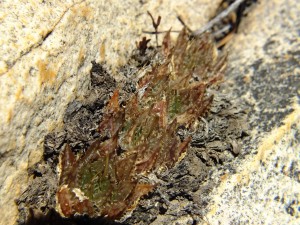
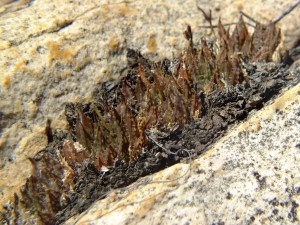
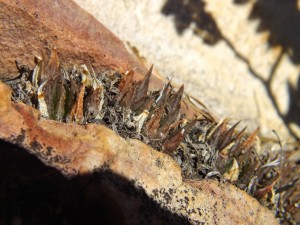
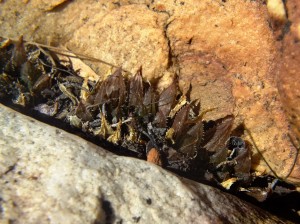
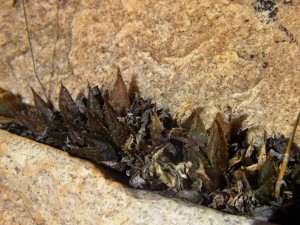
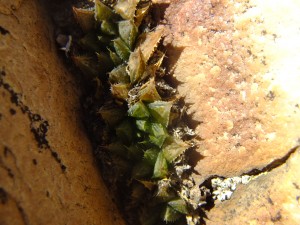
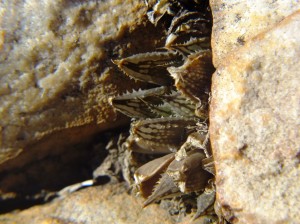

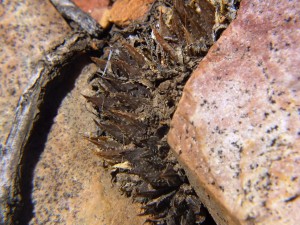

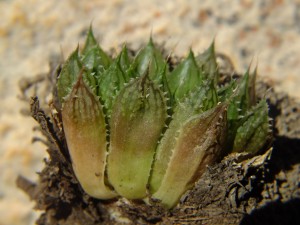
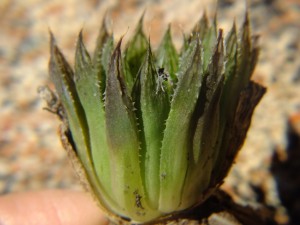

Pingback: Haworthia Update Vol. 9 - Addendum